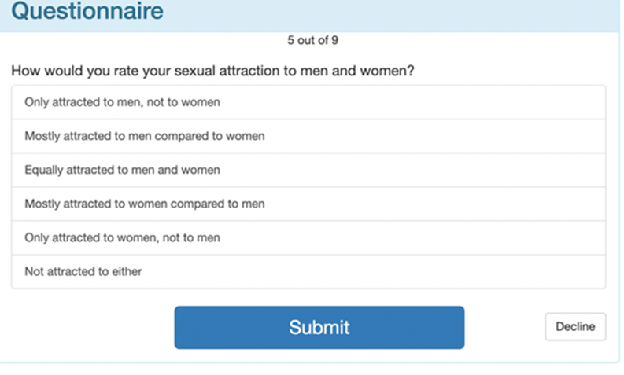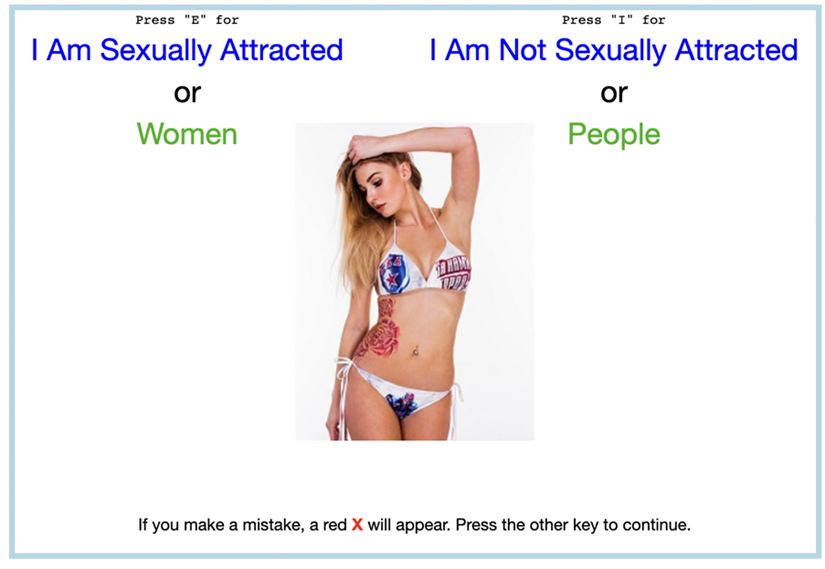In recent months the Massachusetts Interscholastic Athletics Association (MIAA) has jumped onto the CRT bandwagon by forcibly enlisting all its affiliated athletes, coaches and athletic directors in its pursuit of enforced tolerance and mandated equity. The MIAA attempted to require 1) an annual signing of their Diversity, Equity and Inclusion (DEI) pledge, and 2) an online course about “implicit bias”.

Massachusetts Family Institute was immediately contacted by many parents when MIAA rolled out their new DEI initiatives in October 2021. At first, parents were concerned about DEI mandates being placed on their high school students wanting to play team sports. As a result, MFI’s initial work focused on the rights of students to participate on athletic teams without taking the course and pledge. And in recent days, MFI has received confirmation from MIAA legal counsel that there will be “no negative consequences” for students who choose not to sign the pledge or take the course.
However, once MFI began to investigate the pledge itself and the associated course these concerns only grew. While appearing innocuous, both the DEI pledge and the course assume that any disparity or perceived disrespect within a school or athletic setting must be caused by overt animus or implicit bias. As a result, both commit participating students to unwaveringly support any and all DEI policies designed to promote “equity” within school settings.
MIAA asserts that requiring these new DEI initiatives will help their members, which include most public secondary schools in Massachusetts as well as some private schools, gain a better understanding of potentially discriminatory actions, language and behavior; and obtain confirmation of each member’s commitment to diversity, equity and inclusion. However, MFI’s review reveals many issues parents and athletes will find problematic in both the course and pledge.
MIAA’s Diversity, Equity and Inclusion (DEI) Pledge
MIAA’s DEI pledge is couched in vague and subjective terms, so it is very hard for students, parents and coaches to know what exactly signors are pledging themselves to. Specifically, the pledge requires its signors to:
- create and foster a “safe environment within the school community”,
- model “respect and tolerance…including language (body and spoken), gestures, signs and overtures;”
- seek “assistance in dealing with my own or my fellow student athlete’s negative behaviors, problems or concerns”; as well as
- strive “to create a school without hate.”
In some sense, many of these points could be considered positive and aspirational- don’t we all want safe, respectful and encouraging athletic opportunities for students in our communities? But none of the terms used in the pledge are defined. Who decides what standards will be used to decide what constitutes intolerant, disrespectful or hateful behavior? Will articulating religious beliefs on gender, sexuality, or marriage be considered “creating an unsafe environment”? Will female objections to sharing locker rooms with biological males be considered intolerant? Will female protest about biological males’ participation in their sport constitute disrespect? Many questions remain unanswered.
The final point of the pledge is the most problematic as it requires signors to support the Diversity, Equity and Inclusion policy/programs within the MIAA, the named school and all school functions. Once again, no effort is made to outline what these policies/programs spanning all school functions might include. Thus, signing the pledge is like signing a blank check supporting the various policies, programs and initiatives of DEI administrators overseeing high school athletics in Massachusetts.
And these administrators didn’t waste any time exercising their prerogative outlined in the pledge’s final point! Part of the new MIAA policy/program compels students take an online course on ‘Implicit Bias’ that was created by Project Implicit in conjunction with the National Federation of State High School Associations.
MIAA’s Required Course ‘Implicit Bias’
‘Implicit Bias’ isn’t educating about discrimination, it’s about assigning blame for the many disparities that exist in our multi-dimensional society. The course states that current disparities in health, educational attainment, law enforcement and school discipline between social groups are the result of implicit bias and unintentional discrimination. According to the course, implicit biases are automatic reactions based on unconscious stereotypes, past experiences and internalized prejudices and can even be held in direct contradiction with one’s explicit beliefs. This is pure Critical Race Theory indoctrination.

Examples of implicit bias in the course include black students being classified as disruptive and disrespectful more frequently than white students, or teachers having lower expectations for black students compared to white students. In these cases and more, the course maintains that these differences are due to implicit racial biases against African-American students, even if unrecognized. Examples are also given that indicate how implicit bias might play out across gender, LGBT, and other categories within school settings.


The course states that because people are unaware of their implicit biases, researchers must rely on psychological tests to capture data revealing bias; and the Implicit Association Test (IAT) is the test most used by researchers to hone in on its existence. According to IAT results collected by the course creators, pro-white biases are ‘pervasive’ among white test takers revealing that 70% have some degree of pro-white preferences.

Interestingly, however, this ‘pervasive’ bias does NOT translate into widespread discrimination. The creators of the course concede that there is only a small relationship between implicit bias and real-world behavior. And the course further states that while IAT results can be related to behavior “more research is needed to understand the exact conditions under which the IAT will predict behavior”.
Nonetheless, students are encouraged to learn more about and ‘manage’ their implicit biases and to advocate for and institute policies to correct disparities. The course offers several suggestions to help mitigate against biases, some of which could be considered to be plain, old-fashioned good advice: becoming attuned to the messages embedded within the broader culture; taking time and being transparent when making decisions, etc.
So what are the concerns regarding this online course? MFI anticipates that many schools, empowered by the course, will propose and implement policies designed to eliminate disparity within their schools and athletic programs. Parents and students need to consider whether taking this online course (like signing the MIAA pledge) will be seen as endorsing the premise that all disparities within a school and its associated programs must be corrected by rigorous application of policies promoting equity.
Furthermore, by conflating disparity between social groups with harboring implicit bias the online video course establishes that any objection to a policy or proposal (e.g. boys and girls are different, or a boys football team costs more to field that a girl’s track team) can be dismissed as based in bias. In this way, any and all opposition can be silenced and rejected out of hand as a product of some form of internalized discrimination. This is the true concern about the course, and the research behind it.
The Implicit Association Test (IAT) and Project Implicit
Throughout the Implicit Bias course, students are encouraged to visit the website Project Implicit to take IAT tests for themselves. This website, a joint venture of professors at Harvard, the University of Virginia and the University of Washington, generates the data that the course creators rely on to demonstrate the existence of implicit bias. MIAA then uses this data to justify its requirement that its affiliated athletes sign pledges and take online courses. This sets up a circular, self-justifying scenario.
Normalizing Sex and Sexually Explicit Concepts for Minors. Several MFI staff members, logging on with the profiles of different teenagers, took the IAT test repeatedly. Immediately, they were asked to identify their gender, and in one instance were informed that the selected study will contain “images of individuals in underwear/swimsuits” and would be asked “questions about your gender identity and sexuality.” One MFI staff member, registering both as a 13-year-old boy and a 15-year-old girl, took two dozen tests, and not once was a test given that measured race–only gender identity and sexuality.

The gender identity and sexuality tests asked whether words like aroused or passionate “best describe the experience you have when you feel sexual attraction towards someone.” The test also asked:
- how often the test-taker has “erotic fantasies” with men and women as “the objects of fantasy”
- how many romantic relationships have been with men and/or women (answers ranging from all, most, a half, etc.)
- how many sexual encounters have been with men and women,
- what gender the test-taker “associates with the concept sexually attractive and not sexually attractive”,
- what attraction the test-taker has to both men and women.

It is important to note that the answers gathered from these minor students (a supposed 13-year-old boy and 15-year-old girl) constitute the data that allegedly confirms the existence of bias, which the MIAA then uses to justify requiring the course and pledge for its many members.
Inculcating Sex & Gender Confusion. The test then proceeded to ask the 13-year-old boy profile to categorize whether or not he was sexually attracted to eroticized pictures of men. Similar questions were asked of the girl’s profile.
The IAT also asked test takers to answer questions regarding sex assigned at birth, current gender (spanning transman, transwoman, transgender, genderqueer) and sexual orientation. For the girl, the test asked:
- “Have you had the wish or desire to be a man?”
- “How often have you thought of yourself as a woman?”
- “Have you wished you had the body of males?”
- “How often have you thought of yourself as a man?”
- “Have there been times when you’ve felt that you are neither a man or a woman?”

Rather than detect implicit bias, these questions seem to prompt students to question their gender identity and encourage exploration of trans identities. It is unclear how such questions generate data related to implicit racial bias.
Requiring Students to Sort Explicit Words and Images. These tests also showed men and women wearing only undergarments, arranged in sexually suggestive poses. Test takers were then asked to sort these suggestive images into categories along with words such as: lust, aroused, neutral, apathy, and excitement.



These were some of the tests, promoted by the MIAA’s new training program, which students may be given when they visit the Project Implicit website. Recently however, these tests seem to have been removed from the website. Nonetheless, MFI is concerned the results are still influential, and wonders how sexual attraction and gender identity correspond with implicit racial bias.
IAT sorting tests. Remaining on the Project Implicit website are tests that are comparable to the ones highlighted in the online course. These involve rapidly sorting images (black and white faces, or trans and cisgendered faces, etc) and words such as: pain, joyful, attractive, dirty, appealing, disgust, celebrate, abuse, gross, happy, rotten, friend, hatred, poison and nasty.
The words and images alternate and must be sorted into 2 categories (for example: white faces and positive words must be placed in the same category on the right side of the screen, and black faces and negative words must be placed in the same category on the left side). After 2 such rounds, locations and categories are mixed up and the same input must be recategorized (for example: white faces and negative words on the left side and black faces and positive words on the right).
IAT researchers believe that implicit racial biases are revealed when test takers are able to more quickly sort white/good; black/bad than black/good; white bad. To our MFI staffers, it seemed the test was measuring the taker’s ability to recode keys strokes and spatially reorganize visual information rather than capture implicit bias.
MFI is concerned that there are no objective criteria for these tests and that the results are neither scientific nor prescriptive. Indeed, multiple sources suggest that the IAT has potential scientific weaknesses, and that “the link between implicit bias and discriminatory behavior is ‘slight.’” Even the test’s creators confess “there is substantial risk for both falsely identifying people as eventual discriminators and failing to identify people who will discriminate.” Nonetheless, this mandatory course lauds the IAT’s effectiveness and claims to be based on science captured by the IAT test results.
While the MIAA might claim that Project Implicit’s training and tests are good for its member schools and their athletes, MFI’s experience with it reveals that these tests are instead exposing students to sexually explicit images and concepts. This fixation on sexual orientation and gender identity in a training billed as promoting diversity, equity and inclusion is truly bizarre and extremely worrisome. Further, MFI has reasons to be skeptical of the data generated from the Project Implicit tests given the type of questions that are asked and the way in which these tests are conducted.
MFI is concerned that Massachusetts high-school athletes not become unwillingly conscripted into MIAA’s diversity, equity and inclusion initiatives. To MFI, the very notion that outside agencies would create DEI content that schools would then require students to view in order to play sports is extremely problematic. Furthermore, the fact that students are being required to sign an open-ended pledge without any limiting principles is equally disturbing.
MFI believes that students should not be required to take the Implicit Bias course and sign MIAA’s DEI pledge. If you have children who are student-athletes in the public schools, or in private schools that are members of the MIAA (you can check for your school here,) know that your child can not be compelled to take the course or sign the pledge in order to participate in MIAA sponsored activities. Contact your child’s athletic director and tell them your child will NOT participate in promoting MIAA’s DEI efforts.





